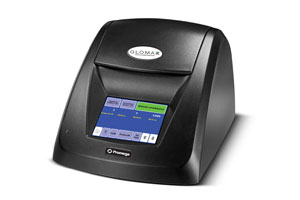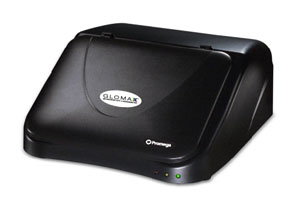应用文献-The Drosophila hairpin RNA pathway generates endogenous short interfering RNAs
已下载2791次 / 原平皓生物
简介:
The Drosophila hairpin RNA pathway generates endogenous short interfering RNAs
Katsutomo Okamura1, Wei-Jen Chung1, J. Graham Ruby2, Huili Guo2, David P. Bartel2 & Eric C. Lai1
In contrast to microRNAs and Piwi-associated RNAs, short interfering RNAs (siRNAs) are seemingly dispensable for host-directed gene regulation in Drosophila. This notion is based on the fact that mutants lacking the core siRNA-generating enzyme Dicer-2 or the predominant siRNA effector Argonaute 2 are viable, fertile and of relatively normal morphology1,2. Moreover, endogenous Drosophila siRNAs have not yet been identified. Here we report that siRNAs derived from long hairpin RNA genes (hpRNAs) programme Slicer complexes that can repress endogenous target transcripts.
The Drosophila hpRNA pathway is a hybrid mechanism that combines canonical RNA interference factors (Dicer-2, Hen1 (known as CG12367) and Argonaute 2) with a canonical microRNA factor (Loquacious) to generate 21-nucleotide siRNAs. These novel regulatory RNAs reveal unexpected complexity in the sorting of small RNAs, and open a window onto the biological usage of endogenous RNA interference in Drosophila.
Katsutomo Okamura1, Wei-Jen Chung1, J. Graham Ruby2, Huili Guo2, David P. Bartel2 & Eric C. Lai1
In contrast to microRNAs and Piwi-associated RNAs, short interfering RNAs (siRNAs) are seemingly dispensable for host-directed gene regulation in Drosophila. This notion is based on the fact that mutants lacking the core siRNA-generating enzyme Dicer-2 or the predominant siRNA effector Argonaute 2 are viable, fertile and of relatively normal morphology1,2. Moreover, endogenous Drosophila siRNAs have not yet been identified. Here we report that siRNAs derived from long hairpin RNA genes (hpRNAs) programme Slicer complexes that can repress endogenous target transcripts.
The Drosophila hpRNA pathway is a hybrid mechanism that combines canonical RNA interference factors (Dicer-2, Hen1 (known as CG12367) and Argonaute 2) with a canonical microRNA factor (Loquacious) to generate 21-nucleotide siRNAs. These novel regulatory RNAs reveal unexpected complexity in the sorting of small RNAs, and open a window onto the biological usage of endogenous RNA interference in Drosophila.
相关实验应用
- RNA干涉(RNAi)效率发光法检测RNAi (RNA interference) 即RNA干涉,是由双链RNA(dsRNA)介导的、由特定酶参与的特异性基因沉默现象,它在转录水平、转录后水平和翻译水平上阻断基因的表达。在RNAi研究中,我们可以人工合成特定的dsRNA,对目的基因进行干涉。但设...
- 双荧光素酶报告基因发光检测双报告基因用于实验系统中作相关的或成比例的检测, 通常一个报告基因作为内对照, 使另一个报告基因的检测均一化。检测基因表达时双报告基因通常用来瞬时转染培养细胞,带有实验报告基因的载体共转染带有不同的报告基因作为对照的第二个载体。通常实验报告基因偶联到调控的启动...


